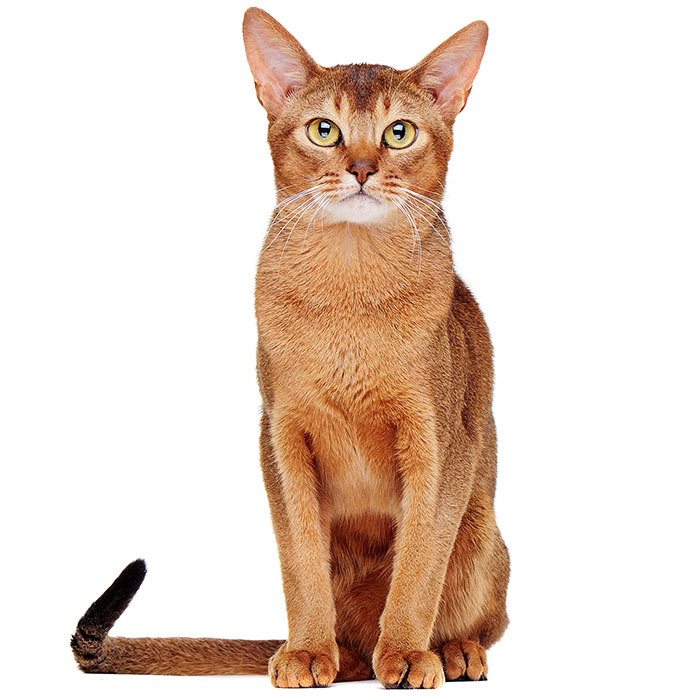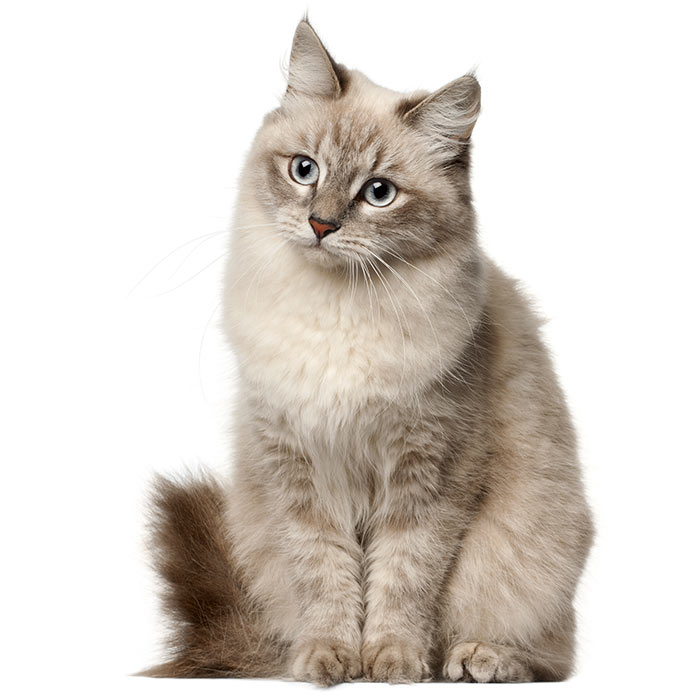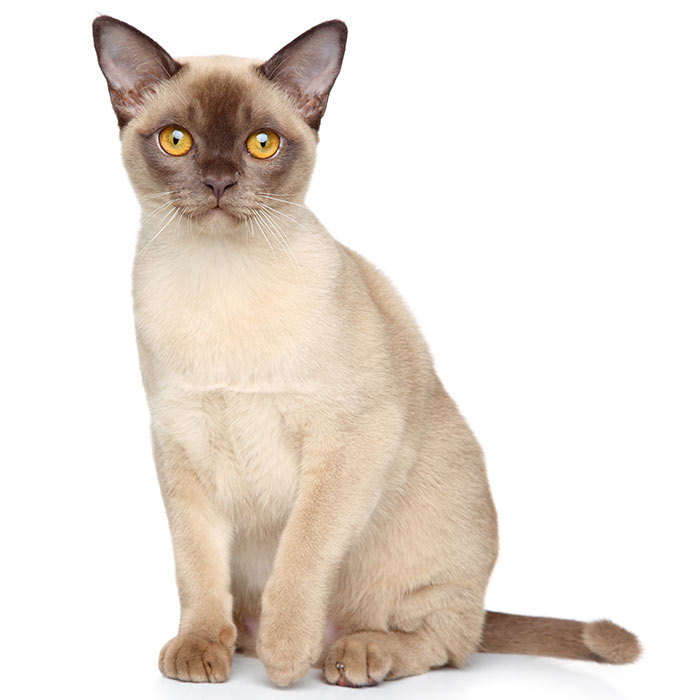Russian Blue
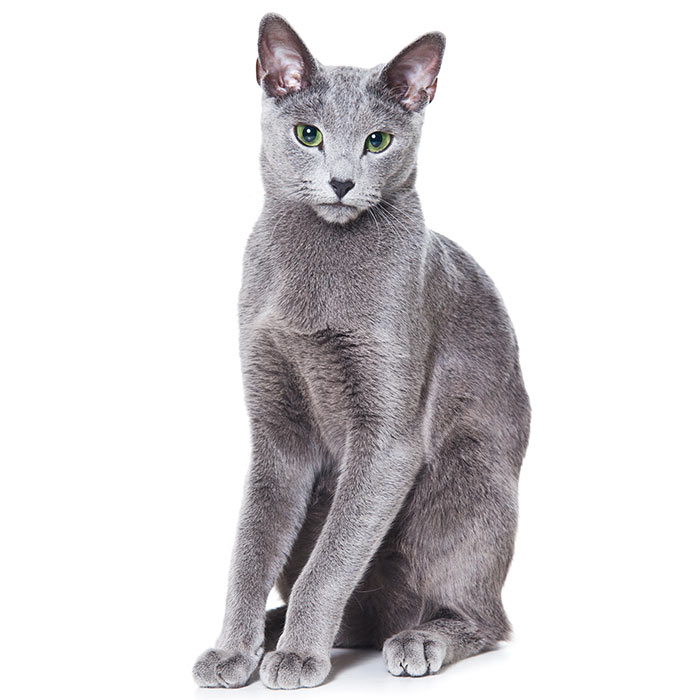
The Russian Blue cat has a striking bluish grey coat that is quite unique. The eyes of the Russian Blue are deep bottle green in colour. While other cats may have a similar appearance to the Russian Blue if they don’t have the green eyes then they are not Russian Blue’s. While the blue is the most popular colour these cats do come in white and black as well, though the black and white cats are very rare. If you are thinking of buying a Russian Blue it’s best to find a reputable breeder so that you can be sure you are getting a pedigree.
This cat is a natural breed and not the result of cross breeding like many other feline varieties. The Russian Blue cat is a medium sized cat that is handsome and athletic looking cat. Their fur is almost velvet like and they are not heavy shedders.
The average weight of a Russian Blue cat is 3.5 to 7 kgs with males cats heavier than females.
The lifespan of the Russian Blue cat is about 15 to 18 years.
Insuring a Russian Blue?
Get award-winning cover with more benefits and up to 80% of eligible vet bills reimbursed. Find out about your cover options.
Get a quick quote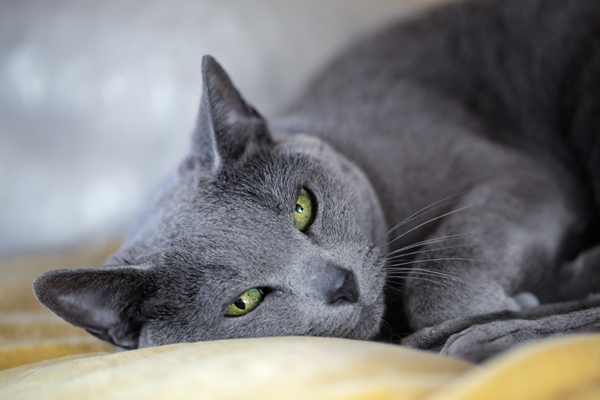
Personality and Temperament
The Russian Blue is a clever breed that enjoys the company of its family. They are the type of breed that can be trained to fetch and play games with you. These cats are happy to spend some time alone and they can amuse themselves.
Once you are home the Russian Blue will most likely follow you from room to room because they also love human company. While they are comfortable with their family this cat may be a bit nervous and skittish around strangers.
Like a lot of other cats the Russian Blue is a creature of habit and they love routine. They love being fed at the same time and following the routine of the family home.
They are ideal cats for families and don’t mind children at all. They may choose a favourite in the family though and stick to them.
Common Russian Blue Diseases & Conditions
Symptoms, diagnosis and treatment
- Weight related problems. The Russian Blue cat really enjoys its food and it may continue to eat as much as it chooses. So, it’s best to limit the amount of food that the cat enjoys to ensure a healthy diet and to combat any weight related illnesses.
- Progressive retinal atrophy refers to a family of eye conditions which cause the retina’s gradual deterioration. Night vision is lost in the early stages of the disease, and day vision is lost as the disease progresses. Many cats adapt to the loss of vision well, as long as their environment stays the same.
- Polycystic kidney disease. PKD is a condition that is inherited and symptoms can start to show at a young age. Polycystic Kidney Disease causes cysts of fluid to form in the kidneys, obstructing them from functioning properly. It can cause chronic renal failure if not detected. Look for symptoms like poor appetite, vomiting, drinking excessively, frequent urination, lethargy and depression. Ultrasounds are the best way to diagnose the disease, and some cats can be treated with diet, medication and hormone therapy.
- Feline lower urinary tract disease (FLUTD) is a disease that can affect the bladder and urethra of cats. Cats with FLUTD present with pain and have difficulty urinating. They also urinate more often and blood may be visible in the urine. Cats may lick their genital area excessively and sometimes randomly urinate around the house. These symptoms may re-occur through a cat’s life so it’s best to discuss things with a vet.
Not all conditions are covered by Pet Insurance. For details of Bow Wow Meow Pet Insurance cover, refer to the Product Disclosure Statement.
What do Russian Blue owners claim for the most?
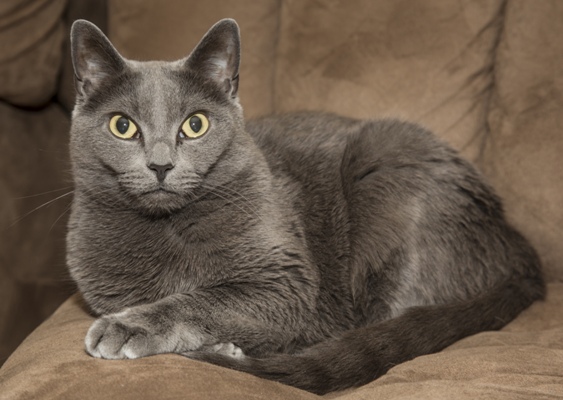
History
There are a number of theories about the history of the Russian Blue. One theory notes that the breed developed on the Archangel Isles in Northern Russia and it travelled with sailors to Europe in the 1800s. Others believe that the cats are descendants of the cats that were owned by the Russian Czars.
The Russian Blue cat was originally known as the Archangel Cat. It was shown in 1875 in England but like a lot of other animals the cat was nearly wiped out during World War II when numbers became particularly low. Following the war both Russia and Scandinavia began to develop the breed. While the breed was imported to the United States in the early 1900s it was not until after World War II that is also took off. During the 1960s British breeders also successfully combined to restore the cat’s features and to boost the number of Russian Blue cats.
The breed is recognised by the Cat Fanciers Association (CFA) and the American Cat Fancier’s Association (AFCA) as well as the International Cat Association (TICA).
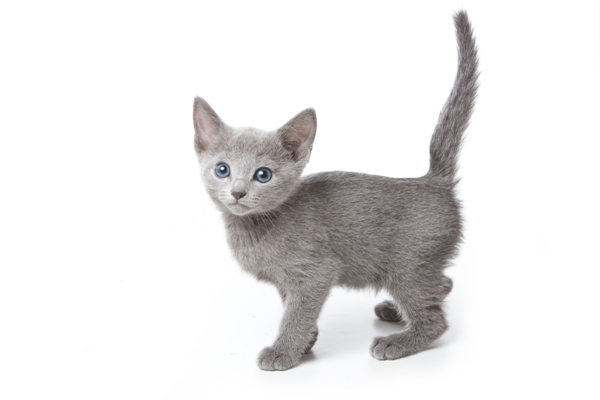
Russian Blue Facts!
- The Russian Blue Cat was originally called the Archangel Cat.
- These cats are ‘doglike’ in a lot of their behaviours and don’t mind the odd game of fetch.
- Rather than running away when the doorbell rings, this cat has been known to check out who’s there before disappearing.
- Russian Blue cats are not very vocal like a lot of other breeds.
- The Russian Blue was first exhibited in 1875 at the Crystal Palace in London
Read all you need to know about insuring a Russian Blue
Learn moreFree engraved pet ID tag on sign up3
Customer Satisfaction
21 day cooling off
Easy to use Pet Portal

GapOnly® in vet claims
MORE INFORMATION
Cat Fanciers Association: http://www.cfa.org/Breeds/BreedsKthruR/RussianBlue.aspx
Russian Cat Council of Australia: http://russiancatcouncilofaustraliaincorporated.com/buying_russian_blue.html

